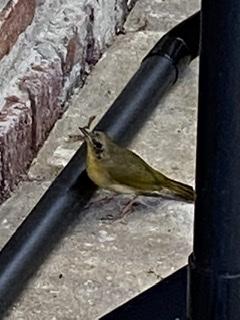The Cornell Lab Bird Academy › Discussion Groups › Joy of Birdwatching › Activities: Different Seasons, Different Birds
-
Activity 2: I've been learning the importance of knowing what bird are seasonal, as I recently thought I had seen a tree sparrow but eBird warned me it was a rare sighting in early summer. I swear that there was a dark spot on it's chest! but I expect it was a chipping sparrow, which are more prevalent now than in winter months. This past spring I saw yellow-rumped warblers (first in Florida in late February, later here in Pennsylvania in early May) and magnolia warblers over two days in mid-May, but now they're all gone! Currently, I'm enjoying the peewees and wood thrushes, which apparently will only be around until fall. I'm sort of glad to see the catbirds leave around that time (so loud and whiny!). For year-round residents, I was surprised to learn that tufted titmice are so common around here since I only occasionally spot them. I see Carolina wrens year-round, a few are my little neighbors, always hanging out and setting up a nest around my deck. I have yet to see a goldfinch - which apparently are common here all year.
-
Activity Two: Three species of birds that are year round residents in the foothills of the Blue Ridge Mountains in Virginia where I live include the cardinal, bluebird and Eastern phoebe. Three birds that are only in my area for part of the year are the ruby-throated hummingbird, scarlet tanager and Baltimore oriole. They only spend the breeding season in this area. Activity Four: At one of the favorite spots for of bird watchers in my area, I could expect to see 57 species of birds in June according to eBird data. Some of the birds I have seen there in June include swallows (tree and barn), red-winged blackbirds, bluebirds, indigo bunting, red-shouldered hawk, and American goldfinch. According to eBird data, in six months (December) I could expect to see 28 species of birds. Some of the birds I would see would be the same as in June as they are year round residents. However, others that I would only expect to see during December would be part year residents such as the hermit thrush and yellow-bellied sapsucker. I have not seen either of these birds and plan to look for them this winter.
-
Activity 2: Three species that are year-round residents Phainopepla, Verdin, and Cactus Wren. I see two of them regularly but I need to look more for the Verdin. Three that only live in your area for part of the year · Canyon wren – I seen them but had not paid attention to the fact that they are here only sometimes (M, A, M and then late June-July and Nov-Dec). I had no idea that they skipped around like that. · Black Throated Sparrow – almost all year round but appears to take a short break late June. I think this may be an error in the map since it does correspond to anything on the range maps. · The White wing Done leaves for a bit in the winter too – longer than the ap shows at my house. They were gone from early December to April 18 this year. · The turkey vulture is here most of the year (again gone a bit more at our property but close to what the ap shows). We 1st saw them this year March 19.
-
Northern Cardinal with Blackburnian Warbler Northern Cardinal has few changes … some increase to the north in the summer. However the Blackburnian Warbler has a complete change from S. America to N. America. Scarlet Tanager with Western Tanager Scarlet Tanager has most breeding in the N central to east of the US while spends the non-breeding perion in north eastern S. America. Breeding season os longer than the Western Tanager (Jun 7 - Aug 17 versus Jun 21 - Jul 6). Western Tanager is similar is that it breeds in the north (US/Canada) and non-breeding in the south (mostly central America) but very little overlap with the Scarlet Tanager. Ruby-throated Hummingbird with Rufous Hummingbird Similar comments to the Scarlet Tanager with Western Tanager on the pattern north to south. Although separate ranges for breeding, the Ruby-throated hummingbird Non-breeding season Dec 7 - Mar 8 in Central American overlaps with the Rufous Hummingbird non-breeding season which is Oct 26 - Feb 8 Sandhill Crane with Yellow-bellied Flycatcher The Sandhill Crane spends some non-breeding (pre-post too) in Mexico but more north of there. The Yellow-bellied Flycatcher non breeding is all in south Mexico and central America. The Sandhill also ranges further north but not as far east.
-
Activity 2 I explored Merlin likely birds Chickadee and Blue Jay is year round and do remember seeing in winter and in my backyard. Downy Woodpecker is year round although will need watch for it in winter. I only remember seeing in spring and summer. It was in my backyard a lot in May but now is infrequent. Grey Catbird and Brown Thrasher are May to October. The Thrasher I see in my yard, the Catbird in a local park. I will need to watch for them and see how late in the season I see them. The wood Duck is April to October. We see them every year in a local park but I am trying to watch for them more as they nest there and hope to see their young.
-
Birdwatching Through the Seasons Activity 2: Using Merlin’s “Likely Birds” feature and/or range maps in field guides, explore birds that are found in your area. Choose three species that are year-round residents, and three that only live in your area for part of the year. Have you seen any of them before? Share what you find in the discussion. I checked my range maps in my field guides against Merlin. I found many of our birds extended to a larger area for year around in Merlin than in my older field guides. I checked these year around birds, since we see them nearly every day: Oregon Junco, Bewick’s Wren, and Anna’s Hummingbird. I checked these for migrants: Bullocks Oriole, Fox Sparrow, and Ruby-crowned Kinglet. I have seen all six before, but the second three only periodically. The Bullocks Oriole we just spotted last week [first sighting, and mistook him at first for a Varied Thrush]. We expect to see the pair off and on through the summer breeding season [Apr-Sep]. The last time we saw a Fox Sparrow was early spring, probably late Mar or early Apr. This large sparrow will come back in the fall to mix with the other juncos and wrens and kinglets to have a cozy winter [non-breeding season]. A hard one to identify is the Ruby-crowned Kinglet, which shares the Fox Sparrow’s migration timing. This tiny cutie arrives in about Sep to share its non-breeding season and takes off about Apr to breed and raise their tiny young ones in northern Canada and Alaska.
-
In their summer breeding plumage, we notice Common Loons have black beaks, red eyes, a green-black band around the neck. They also have more distinctive markings. They are checkered black and white on their back. In the winter, the beak is gray, the eyes are less red, and their colors are more simple, with a white underside and a gray upperside. Where we live, we can only see Common Loons in winter nonbreeding plumage. We'd like to travel to where they breed to see their patterns.
-
I think it is interesting that the American Goldfinch's beak is black/gray in the winter and bright orange in the summer. I never noticed that before.
-
Yes, me too! I wonder how birds change their beak color?
-
@Sophia Me too!!!
-
-
Activity 1: It was really interesting to compare the animated range maps. I had never thought about how northern Cardinals don't migrate the way the warblers do! Also, it was interesting to see how, with the two hummingbirds for example, they cover different regions of North America like Rufous Hummingbird takes the west coast and Ruby throated hummingbird takes the Mid/East. I noticed the Rufous hummingbird had a different migration path going back south than on the way north to breeding grounds. One thing that surprised me was how wide the range of Sandhill cranes is at one time during the year-reaching all the way to the north in Canada while some are still in the states! Activity 2: 3 birds that are year round residents in my area are Northern Cardinal, European Starling, and Red bellied Woodpecker, and I have seen each of those. 3 birds that migrate through the area and I have not yet seen are Sora, Dunlin, and Yellow throated Vireo. Activity 3: For both pairs, the colors and patterns seem much bolder and more strikingly cut in the summer plumage than the winter. The common loon really lightens up around it's neck/face in the winter too, instead of all black like the summer
-
The Northern Cardinal stays within its US range most of the year, concentrated in southern and east coast states while the Blackburnian is a long distance migrant, whose range is from South American to the far northern boreal forests of Canada. The Ruby-throat and Rufous hummingbirds both winter in South American then head to opposite sides of the states for the breeding season. The Scarlet and Western tanagers likewise have similar wintering grounds in South America, but head to opposite sides of the states for the breeding season. Sandhill cranes winter in the southern states but then spread out across most of North America during their migration, spending their breeding season in Alaska and Canada. The Yellow-throated Flycatcher appears to make a long flight over water to get from its Central American winter grounds to its breeding territory in Canada.
-
Activity 2: I live in Panama, Central America. I have seen the Baltimore Oriole around October. The Black Hawk Eagle once every 2 years, its not common to see him around. He is so beautiful. The Swallow-tailed Kite also comes around twice a year. Year round residents: Great Kiskadee, Lesson's Motmot, Gray-Cowled Wood Rail. Saludos, Marietta
-
We have Baltimore Orioles now here in Canada and have been here for about two weeks. I need to mark it down. The other birds I do not know.
-
-
Activity 1: Northern Cardinal is pretty much "sedentary" than the other birds. Blackburnian Warbler and Scarlet Tanager have a similar migration path from andes in south america to the eastern part of north america. Scarlet Tanager and Western Tanager "meet" each other during the migration in central america but they take opposite directions when they arrive in north america the first goes to eastern side the second to the western side. Also the two hummingbirds coming from central america migrates to opposite directions in north america. Sandhill Crane during the year tends to space all the north america, Yellow-bellied Flycatcher from central america migrate to northern parts passing through the eastern part. Activity 2: As resident species I chose Eurasian Blackbird, Hooded crow and the European Serin, I see the first and the second all the year, the second is more often diffused in the city in the spring and summer. As non residents I chose the common swift, the barn swallow, and the common redstarts. The second is more diffused in the countryside, I haven't seen one at now in the city, the other two are presents. Activity 3: Both species present a more colourfull and notable plumage in the summer time, with more detailed patterns and bright colours. Activity 4: Now we are in spring here and there are a lot of birds coming for the warmer part of the year, in six monthes most of birds will be migrating to warmer places and only the resident ones will face the winter.
-
I have had Merlin for a long time and did not know there was a “most likely” feature. How helpful for when we finally get to travel again!
-
I have been engaged in the alternate activity of learning to use a hand me down camera to take bird pics to review/edit later and be able to confer with others for what I cannot identify. yesterday I observed a lone adult breeding snowy egret, mingling in a harbor with the Canada Geese that were assembled there (about 10 or so - just one couple with a gosling. Thanks to the camera, my friend later confirmed two American Black Ducks which I didn't have the experience to feel secure about when I had seen them in the same spot some time ago. I am slowly getting used to the great variation of appearances in stages of life and seasons - this was brand new information for me. So I think, although I will peruse my bird books and the online resources for a few birds related to this exercise, I seem to do best digging deeper with whatever bird(s) I have observed during the day. however I am thrilled that we are an area that gets a lot of migrating birds, and now having joined a birder facebook page (and bird club when it starts meeting again), and thanks to the Cornell rare bird e-alert (which then also shows me what other birds people are listing, I am attuned to what is blowing into town.

-
Activity 1: I couldn't search for birds in the "ebird Status and Trends" area. It kept telling me "nothing found". Any one else have that issue? Activity 2: Birds that live year round in my area are: Canada Goose (seen); Mallard (seen); and, Barrows Goldeneye (seen). Birds that live part of the time are: Common Loon (seen); Dusky Grouse (seen); and, osprey (seen). Activity 3: In summer, the Goldfinch is a brighter yellow and has a black marking on its forehead. The difference between a summer and winter Common loon in striking! I had no idea. The summer loon has green color on its head and neck, vivid black and white pattern on its back - to mention only a few. By contrast, the winter loon is a dull buff/white/grey with little or no markings. Only their tell tale shape lets me know these are the loons I'm used to seeing. Activity 4: It's mid-May and most if not all of my "most likely birds" are around. The ones I could expect to see i 6 months are year round birds such as Northern Harrier, Sharp Shinned Hawk, Golden Eagle, Cooper's Hawk. Bald Eagle, Red Tailed Hawk. I couldn't find birds that are only here in the winter. I live in western Canada.
-
Activity 1: Northern Cardinal pretty Eastern US centric and stationary year round, Blackburnian Warbler clearly east coast S to N coastal run but appears to hug in to land mass yet possible overwater run along Mexican coast. Western and Scarlet Tanagers appear to hold a clear line of demarkation in South America but live close next door then Western heads up along the coastal land mass while the Scarlet takes a turn east with a large over water pass in the Gulf before spreading out on its approach to Northern America favoring the east. Ruby Throated Hummers spread out on the East but I was interested in the sitings in Florida throughout the winter. Some are at home there. The Sandhill Crane loves the interior CONUS run clearly. The Flycatcher has an interesting pass up and down with what appears to be a long run with no stopover even thought they are over land, or at least no sitings in the day on the ground are reporting. Activity 2: All year: Eastern Towhee is indicated as observed in my region year round but I have not seen one. House Finch is very common and ofter robs our Blue Bird nest boxes. Cedar Waxwing is reported but I will keep searching. Part Year: We are on a water way so many ducks and geese pass our way but I selected the Barn Swallow, frequents our porch with a messy nest and but its aerial performance catching insects over our pasture is incredible. Eastern Whip-poor-will is indicated a here but not widely seen. When I was a child heard it every night in the summer but rarely now. We lost many Northern Bobwhite over the years due to hedgerow removal but not they are returning in low numbers but they are here now in May. Activity 3: The American Goldfinch is an amazing color transition show at our feeder. The covert markings etc. stay relatively constant but of course the striking yellow overtakes the winter brown right before your eyes. I have not seen a Loon here but the images really show that shape is most important in maintaining ID during winter months. The beautiful color definition is washed out in the winter when the attraction has lost its importance, but wow is it sensational in breeding regalia! Activity 4: I am fortunate that my favorite birding spot lies on our 400 acre family farm along the middle Potomac River Virginia side. I expect to see or hear over 53 species in the Spring and early Summer months. I can't claim this collection of observations as my own as my Audubon team came and assembled it for me. The changing landscape now is revealing Osprey who returned pretty much on time in late March, passing Northern Harriers and I was lucky to see the Red Breasted Grosbeak this year which is only a brief visitor. From this lesson I am searching now for the Blackpoll Warbler that should be passing through now and other Warblers known to pass but not seen often.
-
American Red-start?

 Great Blue Heron
Great Blue Heron -
Yes that is a female American Redstart.
-
-
1. It is really very interesting to see the migration paths and patterns that each bird takes. The northern cardinal, as a whole stays in the same regions (cover a good part of north America) pretty much throughout the entire year whereas the western blackburnian warbler covers a huge territory range from south America to Canada but resides in a small territory during non-migration season. The scarlet tanager’s territory range is much smaller when it in the southern regions but expands quite a bit when it goes north and becomes more plentiful. Whereas, the western tanager really stays to the west, closer to the coast only. A small percentage of the ruby hummingbirds remain in Florida throught the year, the others head northeast (North America). While the Rufous stays by the west coast only, whether its south for the winter or up north during the summer. The sandhill crane’s population stays condensed in the winter months; some stay in Florida but during the summer their “home turf” is quite vast. And the yellow-bellied flycatcher is also much more condensed in the winter in Central America and heads north skipping the southeast US but on its trip back south does spend time there. 2. Year round I see mallards, mourning doves and red-bellied woodpeckers (Westchester, NY). Whereas some of our part-time visitors are the Green Heron which I saw for the first time near home just yesterday, the ruby-throated hummingbird and the dark eyed junco. The dark-eyed junco is our winter resident and so does the reverse commute. 3. During the winter or cooler months the birds’ feather colors are not nearly as vibrant as they are in the warmer months, especially mating season. The duller hues may also help them camouflage. And as is typically the case the males are the more colorful of the pair but may look a lot more like their female counterparts in the “off season”. Many times juveniles look similar as well making it sometimes hard to distinguish who is who. 4. Since this is my first real season paying close attention to my bird neighbors I am still learning who I will typically see during this time. I learn about a new bird in my area multiple times a week- even more with this class. I can’t wait to really put on my looking glasses as the seasons change and the birds reverse commute in the fall. There is something new to see and learn every day!!

-
Different Seasons Different birds: Better shot of suspected Palm Warbler

-
Activity 4, Different Birds Different SeasonsThe easiest spot for me to observe birds is my back porches both in MA and FL. Florida changes in subtle ways over the 7 months or so that I stay here. If I look out 100 meters there is a tall pine tree in the middle of a park that has a commanding view of the field underneath and around it. There, I see mostly birds that are year round dwellers and mostly larger birds. From cowbirds and grackles (who populate the supermarket parking lot I use), to Bald Eagle and hawks of which I have identified Coopers Hawk (shown below) and Bald Eagle. I also see Red Tail and Ospreys and Swallow Tale Kite fly as there is a river next to the field and quite a bit of assorted prey like squirrel sand rabbits and song birds that feed on the shrubs and grasses (and their bugs) in the park.
 In the few years we have lived there I have also seen numerous small birds that sometimes are numerous in the trees, and sometimes not. Merlin helped me identify this years photographable birds. I got a 2X tele extender to magnify my 150 mm lens and caught three transient warblers. Black and White Warbler was easily identified along with a great crested flycatcher who might be year-round. Two other likely candidates are shown below. I think one is a Palm Warbler the other is a Yellow Rumped Warbler.
In the few years we have lived there I have also seen numerous small birds that sometimes are numerous in the trees, and sometimes not. Merlin helped me identify this years photographable birds. I got a 2X tele extender to magnify my 150 mm lens and caught three transient warblers. Black and White Warbler was easily identified along with a great crested flycatcher who might be year-round. Two other likely candidates are shown below. I think one is a Palm Warbler the other is a Yellow Rumped Warbler.
 Warblers are hard. I need to take a whole course on them and get the associated calls implanted in my head if I want to get better at them. I have recorded several songs but found no sound identifiers that work for birds like Shazam does for recorded human music. If anyone has a good song identifier for birds let me know. I am using Merlin to guess and listen and it is not great.
Warblers are hard. I need to take a whole course on them and get the associated calls implanted in my head if I want to get better at them. I have recorded several songs but found no sound identifiers that work for birds like Shazam does for recorded human music. If anyone has a good song identifier for birds let me know. I am using Merlin to guess and listen and it is not great. -
Activity 2 - Using Merlin, three species that I see often that are here year round are the House Sparrow, the American Crow, and the Mourning Dove. Not very exotic, I know! The Cedar Waxwing is only here during the non breeding part of the year, and I have seen those here, very beautiful. Have not yet found two others that are here seasonally - will keep looking!
-
I perused the migration site and was interested to see the sandhill cranes patterns, and the great variety of areas they go to. I saw some this year for the first time and wondered about their migratory patterns. I did not know they mainly migrated at night! We need to advocate for birds in our communities.
-
Lesson 1 - When I look at the maps for the birds in lesson 1, I see this: Northern Cardinal - some seasonal variation, but primarily stays in the lower mid-west and southeastern U.S throughout the year. The Blackburnian Warbler - does a huge migration from lower South America in the winter months, north through the United States and up to Canada in the summer months. Scarlet Tanager- Winters in southern South America, and travels through the southern U.S. up through the eastern mid west to southern Canada for the summer months. The Western Tanager - winters in Central America and Mexico, then migrates through the Western U.S. up to western Canada for the summer. That's why the are called Western...I should see these in my neighborhood for the next few months - I will keep an eye out! Ruby-throated hummingbird - Also winters in Central America and Mexico, then travels through the entire western U.S. when migrating, reaching Southern Canada. The Rufous Hummingbird - winters in the western part of Central America and Mexico, then sticks to the west coast when migrating up to north west Canada. Also in my neighborhood this time of year! The Sandhill Crane - spends the winter in Texas and Florida and the Indiana/Michigan area. Also in parts of California, I then does a complete migration up through the mid-west predominantly, with some members of the species reaching Alaska and northern Canada in the summer. Although some remain around the Great Lakes and other areas. The Yellow-Bellied Fly Catcher winters in Central America, then seems to fly across the Gulf of Mexico starting late spring, around May, through Texas to the Great Lakes Region, and into New England and Eastern Canada for the summer. How did each species determine its path? This is fascinating.
-
I always see Cardinals, Carolina Chickadees & Tufted Titmouse at my feeders but recently I have been visited by 3 new birds that I’ve never seen in my yard before: a female Common Yellowthroat (photo; ID by Merlin), a Black & White Warbler and several Ovenbirds The Yellowthroats live year round in Florida (I will be looking out for them now!) but the Black & White Warbler is only in Florida during the winter & Ovenbirds were migrating.

-
The birds I see year round, to name a few, include Black-capped Chickadee, House Spaarows, House Finches, Northern Cardinals. The ones I noticed lately that migrated in are the Rose-breasted Grosbeak, Baltimore Oriole and Gray Catbird. The Grosbeak and Orioles arrived at the same time. There was a male and a female Grosbeak and 3 male and 1 female Oriole in the yard for a couple weeks. I have not seen them for 4 days now. This happens every year. They come for a couple weeks, then I don’t see them. I live in the city, with a small lot but have a lot of trees and understory vegetation. What environment do these birds need to breed? After the Grosbeak and the oriole leave, the Gray Catbird showed up in the yard. I live in Wisconsin along Lake Michigan, the map shows that the Gray Catbird is a year round resident along the lake, but I usually only see it in the yard in spring.
Read More:
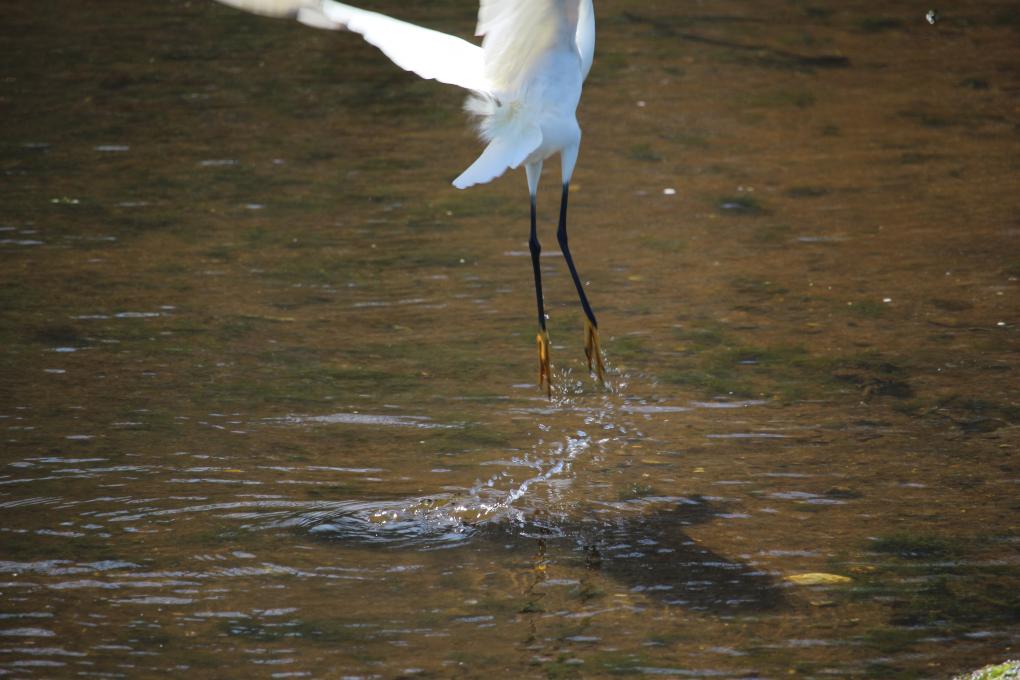
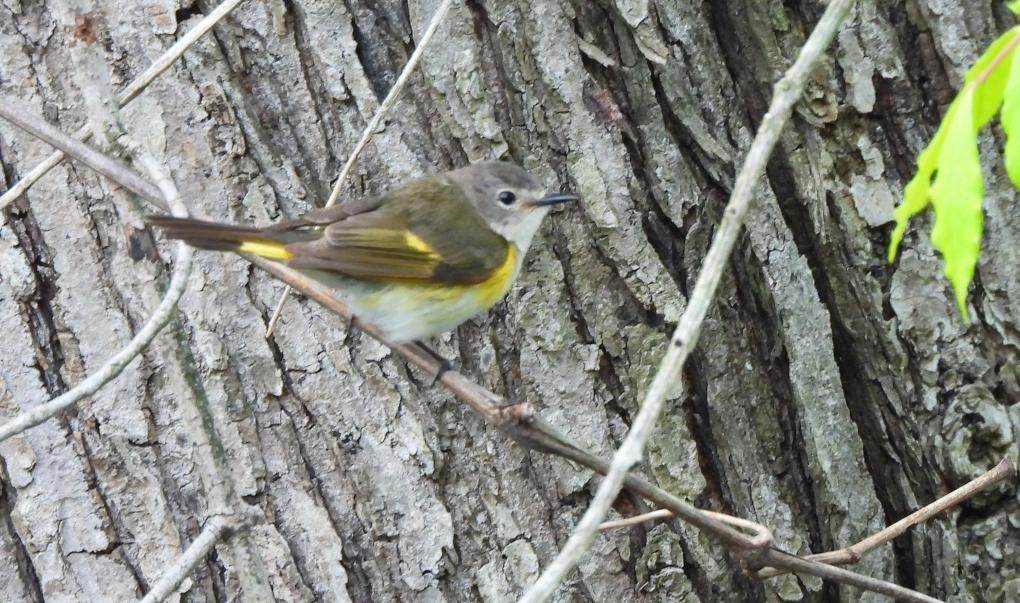
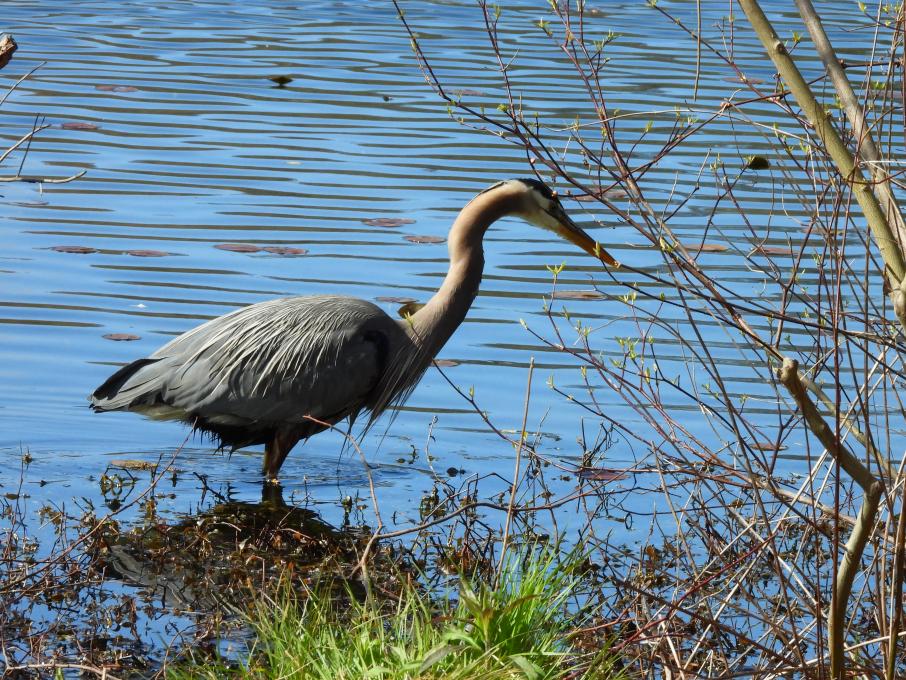 Great Blue Heron
Great Blue Heron 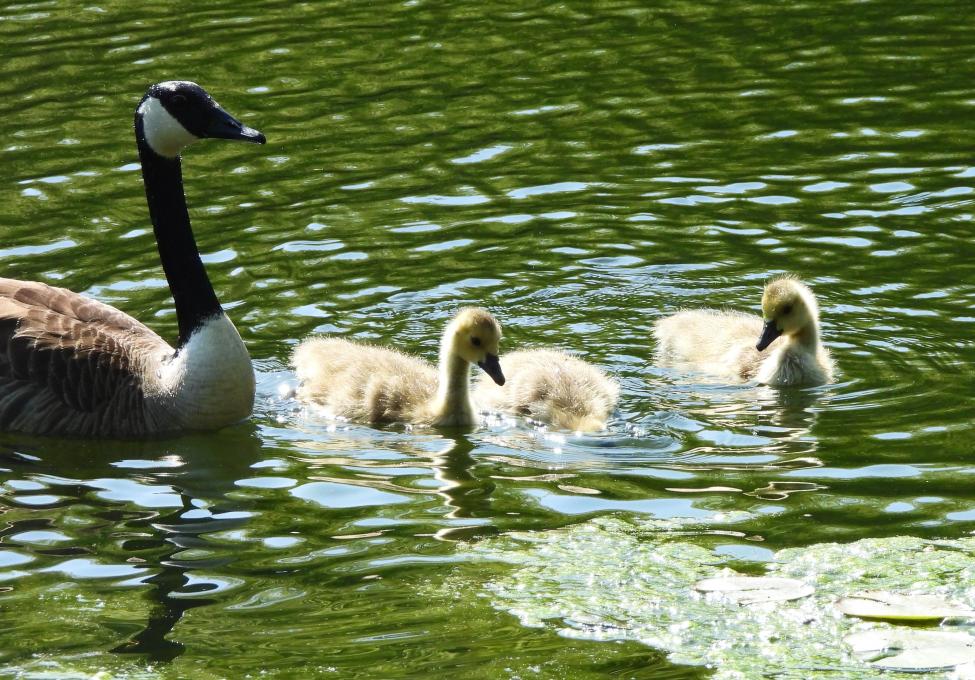
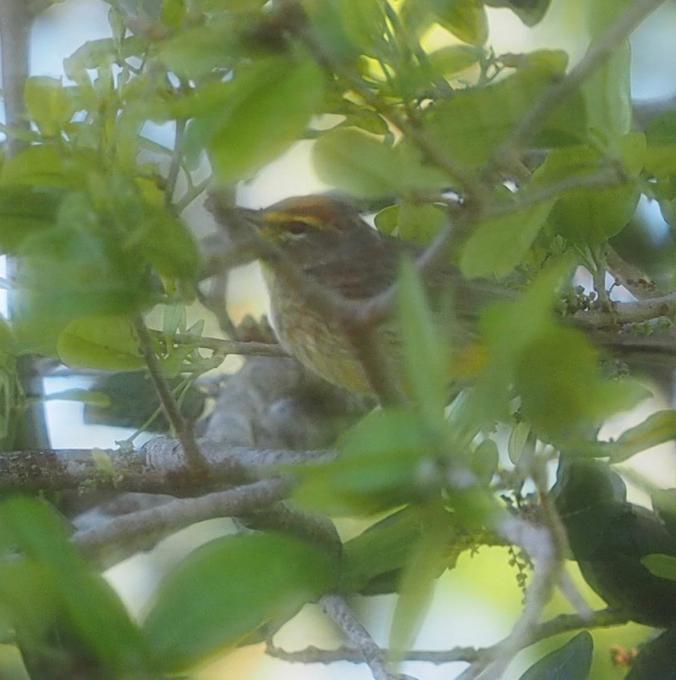
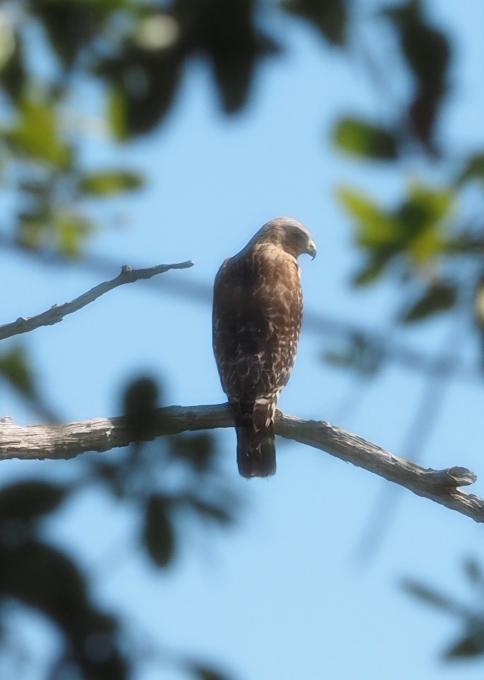 In the few years we have lived there I have also seen numerous small birds that sometimes are numerous in the trees, and sometimes not. Merlin helped me identify this years photographable birds. I got a 2X tele extender to magnify my 150 mm lens and caught three transient warblers. Black and White Warbler was easily identified along with a great crested flycatcher who might be year-round. Two other likely candidates are shown below. I think one is a Palm Warbler the other is a Yellow Rumped Warbler.
In the few years we have lived there I have also seen numerous small birds that sometimes are numerous in the trees, and sometimes not. Merlin helped me identify this years photographable birds. I got a 2X tele extender to magnify my 150 mm lens and caught three transient warblers. Black and White Warbler was easily identified along with a great crested flycatcher who might be year-round. Two other likely candidates are shown below. I think one is a Palm Warbler the other is a Yellow Rumped Warbler.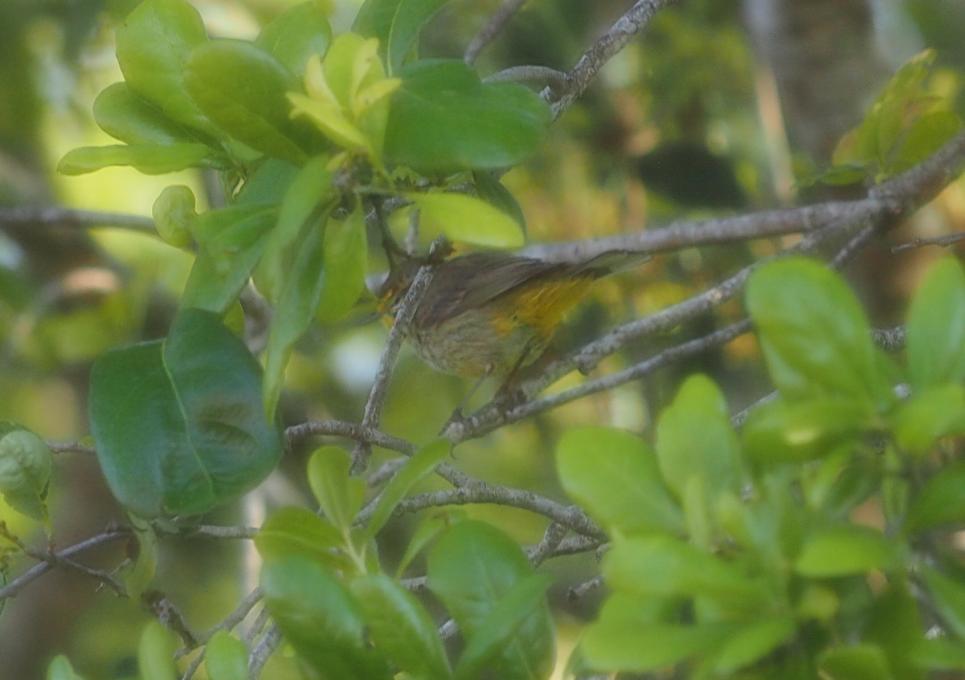
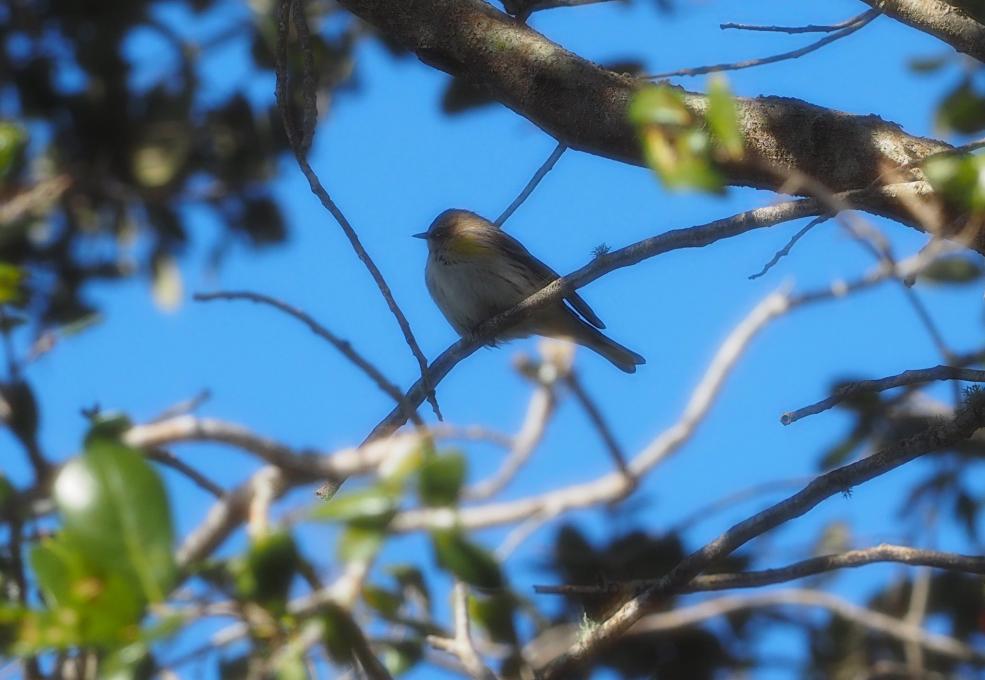 Warblers are hard. I need to take a whole course on them and get the associated calls implanted in my head if I want to get better at them. I have recorded several songs but found no sound identifiers that work for birds like Shazam does for recorded human music. If anyone has a good song identifier for birds let me know. I am using Merlin to guess and listen and it is not great.
Warblers are hard. I need to take a whole course on them and get the associated calls implanted in my head if I want to get better at them. I have recorded several songs but found no sound identifiers that work for birds like Shazam does for recorded human music. If anyone has a good song identifier for birds let me know. I am using Merlin to guess and listen and it is not great. 